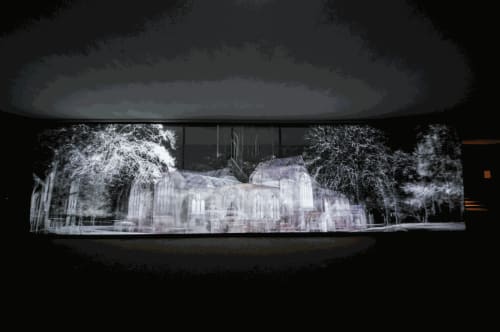Bio sonar, or echolocation, is a hidden means used by several species to navigate space. Dolphins, wales and bats bounce sounds off objects, listening to their echo to determine distance, direction, speed and density. It is so keenly tuned with the latter, that they can detect miniscule prey from 5 metres away, avoiding wire as fine as hair in total darkness. Thankfully, these constant calls are often too high pitched for humans to hear, rendering them invisible.
Using technology to reveal what is hidden is a rich vein running through Mat Collishaw’s body of work. The British artist – who emerged alongside Damien Hirst and Tracey Emin out of Goldsmith’s College in the late 80s – began in sculpture, installations and photography, but in recent years has employed complex zoetropes, mechanised birds and emotive Ex Machina faces to interrogate recurring themes of atrophy and illusion. His latest installation, opening to the public this week, continues putting flesh to bone through modern tools. The grandly ambitious Echolocation is an eleven-metre-long, three-channel video projection that excavates more than a millennium of Kingston’s local history. Viewable at the Undercroft – the alleyway running between the Thames and All Saints Church – the projection recreates the original chapel of All Saints using Lidar, or laser scanning, an advanced method similar to echolocation. The result is a striking spectre steeped in ingenious references, in which historical free-association coalesce and overlap. The chapel was the ancient coronation site of several Saxon kings, including Athelstan, the first king of a unified England in 925. Kingston is also a bat conservation area, and the animated animals that circle round the chapel are in homage not only to Lidar, but the work of Eadweard Muybridge, a Kingston resident who pioneered stop-motion photography and assumed the atavistic spelling of his forename after the Saxon kings. In a further spiralling loop, he died in 1904, a mile from the installation. Altogether, the all-encompassing work is best described in the artist’s own words, “like a free-flowing X-ray of an unseen past, a ghostly palimpsest…”
To celebrate Collishaw’s first permanent outdoor public art installation in the UK, Port caught up with him to discuss nostalgic reveries, modern mediums and the world of bats.
April 14, 2021

